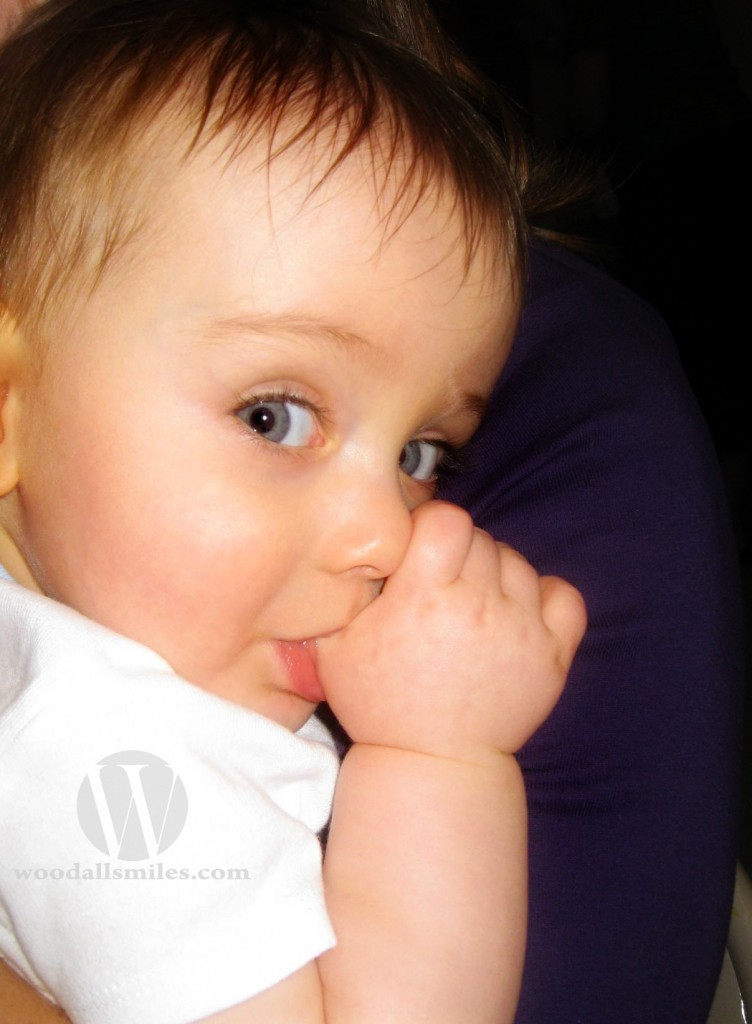After several busy weeks of wrapping up the office construction, WE ARE OPEN!! Pictures to follow soon in another blog post.
I am back to follow up on the thumb sucking/ pacifier blog post. I thought that the picture above shows just how soon and how connected some can become to sucking their thumbs. It is of a 4.5 month old baby in the womb already working on a habit, but remember it doesn’t have to given up until around age 4 or so.
First we will talk about getting rid of the paci. First I think limit it to bedtime only and leave the paci in the bed/crib. When it comes time to get rid of it completely, I think great idea is to “trade it in” on a toy. This has to be the child’s decision though. Once they agree that “big kids don’t use pacies” then offer a trade in. It is important that the child not feel ashamed, pressured, or rushed, we don’t want to trade in a paci and end up replacing it with a thumb. One reader had a great idea of “feeding the crabs pacies” while on vacation to the beach. This could be a great way to work up to it, possibly starting weeks in advance of getting excited to do it and make it an event for the whole family, a picnic on the beach then strategically placing the pacies in a special crab sand castle so the crabs can find them, etc… The key is for the child to feel like they are making the decision to give it up. It is also super important to make sure that there are no other pacies availible to the child after they decide to give them up!
Ok so now to the thumbs!!! Since they can’t be traded in for a toy or fed to the crabs, what do we do??? First we need to remember that this is not the worst problem in the world and we must keep things in perspective. It is a blessing to have a happy/healthy child and thumbsucking is only a minor challenge. Please remember this as we do not want to upset the child emotionally long term in order to deal with what is most of the time a short term challenge. It is key to take your time with this and don’t make it into a HUGE situation and a big focus in your family/daily life. In my opinion the bigger deal that is made of it, the harder the habit becomes to break.
As with the paci, the child must decide it is a problem and that they feel like the want to stop it. Trying to force the child to stop by paying a lot of attention to it could make the habit stronger. It can quickly turn into a “I’ll show you” thing where the child does it just to cause an uproar. If and when the child brings up stopping the thumb sucking, encourage them to quit and ask/tell them that you would like to remind them if you notice it. And do exactly that if you notice it, only remind them “I see that thumb snuck back into your mouth…” no shame, just remind, then go on to another subject. If you see the child is trying but forgetting easily, a bandaid (maybe a cartoon one) on the thumb as a reminder might help. Also, there are reminder fluids on the market that taste bad that can be used. If you see the child making an effort at it then offer a reward, maybe as a surprise or maybe planned out. So as a surprise, “I got you an ice cream because I noticed how well you are doing keeping that pesky thumb from jumping into your mouth.” Or as a goal, use a calendar and every good day gets a sticker and every 10th sticker gets a reward.
So what happens if the child is good during the day, but accidently sucks their thumb during sleep. First, it is important to discuss this and make it a team effort against the “pesky, sneaky thumb.” One idea is to put a band aid on the thumb only at night. The reminder fluids might work well for this as well. Another idea for night time is a sock puppet over the offending hand at bedtime (please make sure the puppet is safe and does not have any parts that might be a choking hazard).
What part does an orthodontist play in this? There are quite a few things that can be done. Sometimes for a child that is a little older (6-8) it is good to have another person to discuss the habit with and be accountable to. Sometimes having encouragement from another adult can be the trigger that is needed to help. The child can call in weekly and report progress with pride to me and sometimes that is all it takes. Sometimes in habits that are super stubborn, a specifically designed appliance can be used to remind the patient. These appliances can vary from very simple to very complex. The most important thing to remember is if the child does not want to stop the habit, then it will not happen. I have seen children outsmart every type of appliance out there. So most of the time it is best if an appliance is used after all other reminders have failed and only if the child truly wants to stop the habit. If they do not want to stop the habit, no appliance will work.
Please post thoughts, comments, helpful advise, etc by clicking “leave a comment”
Disclaimer: The information on this blog is not meant to be taken as direct medical advise. Please consult your orthodontist or dentist for specific advise on your situation.

